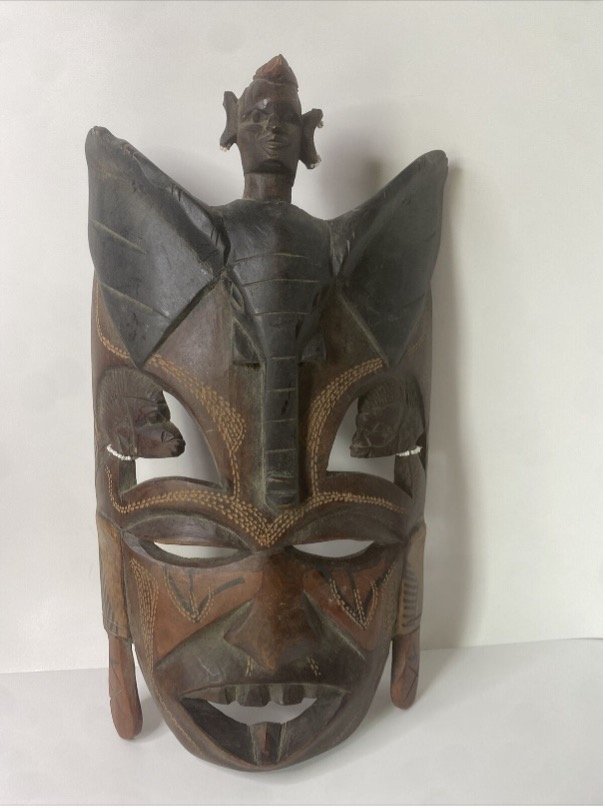African Artifact Collection
This collection hangs on the gallery wall near the entryway to Lost Worlds Brewing. Several pieces stand out, with stories that bring these taproom artifacts to life:
African Ngombe Ngulu Curved Knife Executioner's Ceremonial Sword from Zaire (top row, third from left)
Made of iron, this sword/knife comes from the Ngombe or Ngulu tribes of Africa – in the Congo. Some refer to these as executioner's swords, a practice apparently outlawed by the Belgian's when they inhabited the region. The blade is covered with interesting, inscribed decorations and the handle is wrapped in wire. This artifact is from the collection of the late Dr. Kenneth Stalter, a surgeon in Oneonta, NY. Dr. Stalter was a world traveler who collected many wonderful treasures while on his journeys. He even climbed Mt. Everest. Sadly, Dr. Stalter passed away at a young age. This was one of the artifacts that the Doctor brought back with him from his African travels.
African tribal art, Songye Shield with luba Mask from Congo (third rom, second from right)
Songye shields are a type of African tribal art originating from the Songye people, an ethnic group from the Democratic Republic of Congo. These shields, also known as Ngabo, hold both practical and symbolic significance within Songye society.
Songye shields are typically made from a wooden base, which is carved and decorated with various materials and motifs. The wooden base is often reinforced with animal hide, rattan, or fiber bindings to provide durability and strength. The surface of the shield is adorned with intricate geometric patterns, symbolic designs, and sometimes incorporates the use of metal elements such as brass or iron.
These shields were primarily used for defensive purposes during warfare, serving as protection against spears, arrows, and other weapons. The design of the shield allowed the bearer to hold it securely and maneuver it effectively in battle. The incorporation of symbolic elements and motifs on the shield also served to intimidate adversaries and convey the status and power of the shield's owner.
The decorative motifs found on Songye shields often have symbolic meanings associated with Songye cosmology and cultural beliefs. These motifs can represent ancestral spirits, protective spirits, or animals associated with power and strength. The geometric patterns and abstract designs may also convey messages related to identity, social status, or the lineage of the shield's owner.
In addition to their practical use in warfare, Songye shields also played a role in ceremonial and ritual contexts. They were utilized in dances, initiations, and other cultural events to symbolize the strength, courage, and ancestral protection of the community.
Songye shields are highly regarded for their artistic quality and cultural significance. They are sought after by collectors and art enthusiasts for their aesthetic appeal and historical value. These shields can be found in museum collections and private collections worldwide, representing the artistic traditions and cultural heritage of the Songye people.
Africa Map (second row, second from right)
This Africa Map depicts Africa with French designations. At the bottom, it reads "Gardons Notre Amitie Pour Toujours" which translates to "Let's Keep Our Friendship Forever.” This map comes from the Republic of Congo which gained independence from France in 1960.
Aztec/Mayan Vase (not pictured0
This vintage terracotta vase from Mexico features an intricate Aztec/Mayan design. The vase is handmade and showcases the rich culture of Mexico.










